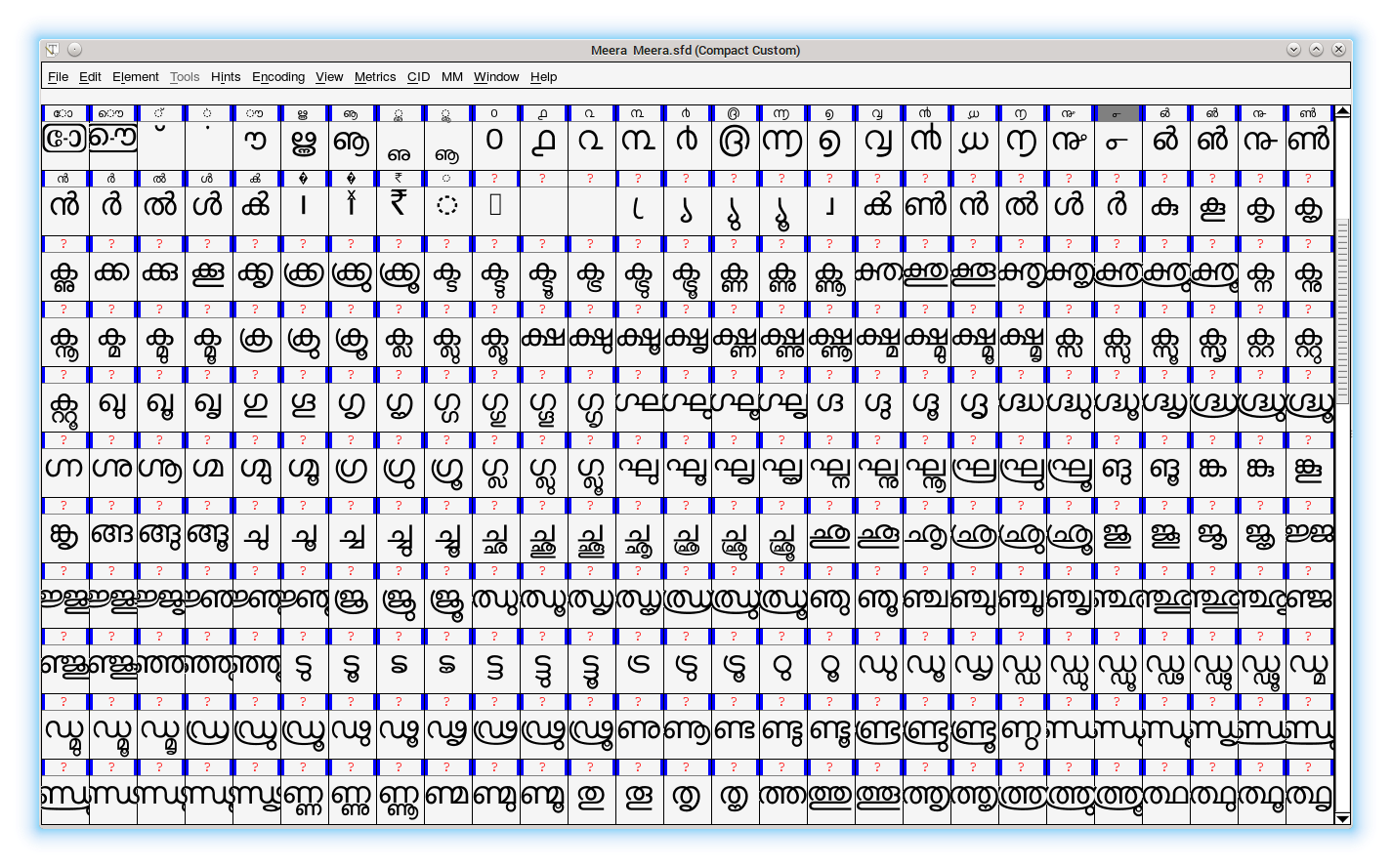One of the integral building blocks for providing multilingual support for digital content are fonts. In current times, OpenType fonts are the choice. With the increasing need for supporting languages beyond the Latin script, the TrueType font specification was extended to include elements for the more elaborate writing systems that exist. This effort was jointly undertaken in the 1990s by Microsoft and Adobe. The outcome of this effort was the OpenType Specification – a successor to the TrueType font specification.
 ][1]
][1]Fonts for Indic languages had traditionally been created for the printing industry. The TrueType specification provided the baseline for the digital fonts that were largely used in desktop publishing. These fonts however suffered from inconsistencies arising from technical shortcomings like non-uniform character codes. These shortcomings made the fonts highly unreliable for digital content and their use across platforms. The problems with character codes were largely alleviated with the gradual standardization through modification and adoption of Unicode character codes. The OpenType Specification additionally extended the styling and behavior for the typography.
The availability of the specification eased the process of creating Indic language fonts with consistent typographic behaviour as per the script’s requirement. However, disconnects between the styling and technical implementation hampered the font creation process. Several well-stylized fonts were upgraded to the new specification through complicated adjustments, which at times compromised on their aesthetic quality. On the other hand, the technical adoption of the specification details was a comparatively new know-how for the font designers. To strike a balance, an initiative was undertaken by the a group of font developers and designers to document the knowledge acquired from the hands own experience for the benefit of upcoming developers and designers in this field.
 ][2]
][2]The outcome of the project will be an elaborate, illustrated guideline for font designers. A chapter will be dedicated to each of the Indic scripts – Bengali, Devanagari, Gujarati, Kannada, Malayalam, Odia, Punjabi, Tamil and Telugu. The guidelines will outline the technical representation of the canonical aspects of these complex scripts. This is especially important when designing for complex scripts where the shape or positioning of a character depends on its relation to other characters.
This project is open for participation and contributors can commit directly on the project repository.
- Project: https://github.com/IndicFontbook/Fontbook
- Mailing list: https://groups.google.com/forum/#!forum/indicfontbook
- Latest version of the documentation: http://thottingal.in/documents/Fontbook.pdf